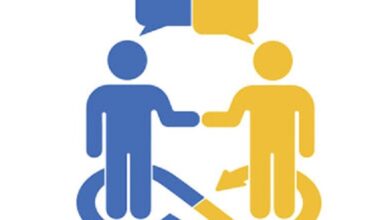Difference between product and service 6 differences
Many think that a product and a service are two easily differentiated terms. For example, it is very clear that when a computer is purchased, a product is being purchased and when the computer is called in to fix it, a service is being requested.
However, sometimes the dividing line between the two concepts seems unclear. For example, when you go to a restaurant, buy a product or order a service?
In this article, we will announce the differences between product and service , as well as give examples to understand it better.
What is the difference between product and service?
Let’s take a look at how services and products differ.
1. Tangible vs. intangible
This may be the clearest difference. A product is something that exists physically, that we can touch, taste, smell, see and even hear. Rather, a service is made of physical matter, as it is an action.
The difference between a tangible product and an intangible service is at the point of sale. While the product was already there, the service is only realized after receiving it .
2. Storable vs. perishable
It is another difference that is also very easy to understand. Products are storable, at least for a period of time. Rather, services simply cannot be saved , because they are actions.
For example. A car salesman sells products that, if not purchased, are parked in the garage. If the weekend comes and the store closes, the product will remain there.
On the other hand, if what is offered is a car rental service, if there is a day when you don’t rent them, you are no longer offering the service. It’s not that the service is saved, it’s just that it’s not directly.
The storage capacity of a product must be taken into account , considering that aspects such as expiry date or surplus can lead to economic losses.
As for services, it is important to ensure that your offer is made to a market that is interested in it, and you must also consider the most appropriate times to offer it. While it is something that is not going to expire, it should be borne in mind that if it is offered on days when there are no customers, then something that people simply do not require is being offered.
3. Engagement vs. acquisition
Services are not something physically perceptible, as they appear at the moment someone wants to receive them. Basically, there is service when there are customers . For example, a massage therapist does his job when there is a client requesting it. Massages are not something material once they are received.
Another thing to consider about services is that they are highly customizable, unlike products.
For example, buying a suit, a product, doing a service for yourself is not the same thing. In the first case, although there may be different sizes and types of clothing, it is a product that is already manufactured at the factory. Rather, doing so implies that they take action and take into account exactly how you want them to.
4. Need vs. trust
Products are manufactured with a basic function, which is to satisfy the need for which they were manufactured. If you buy a dishwasher and it cleans well, it’s a good product.
This is not so clearly the case with services. When a service is received, the criteria for considering it good are completely subjective . They depend on each person who receives it.
When you decide to go to a restaurant or hairdresser, the confidence you have in the professionals who work there will largely determine which establishment you go to.
This is not to say that people choose products out of extreme necessity, rather than relying on their brand name, past experiences or third party recommendations, however, the decision to buy a brand of milk or a type of blade is not something that takes very long. time to be decided.
5. Homogeneity vs. heterogeneity
Products are usually the result of a mass production chain . The object is designed, molds are created and several thousand are manufactured each week. All of them pretty much the same. Products, in mass manufacturing, follow very specific standards. For this reason, if a product is purchased that is defective, it may be returned or repaired.
Rather, the quality and features of a service will depend on many factors. Several people can offer the same service and still perform it in very different ways.
It is ideal for companies to have quality criteria when offering a service, or something like that, so that in case the customer is dissatisfied, they can be compensated in some way.
6. Customer-provider interaction
When a service is produced, there must be at least two people: the customer and the provider. Therefore, to ensure that the customer acquires the service being offered, the supplier must take great care of the commercial relationship .
Regarding the previous point, it is important that the company guarantees that the quality standards are met when offering the service.
Aspects such as the employee’s image and their ability to communicate, together with the physical space in which the action is carried out, become very important when what is offered is something intangible, such as a service.




